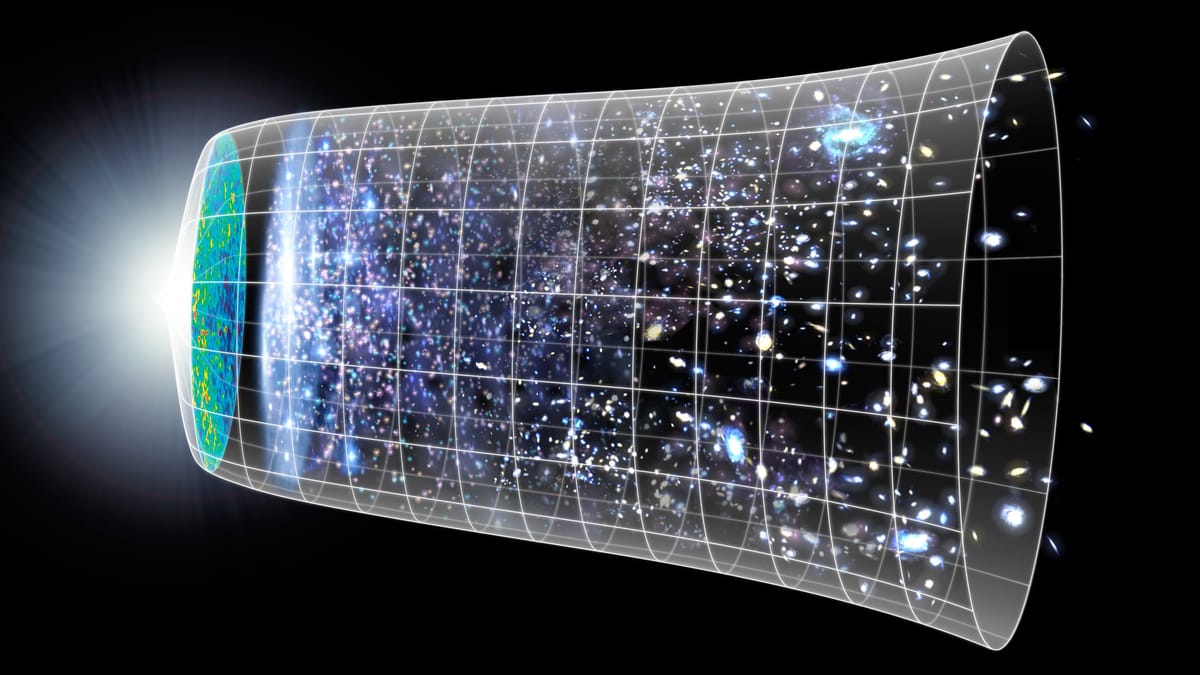How our Sun may be used to test dark energy
Dark energy is driving the accelerating expansion of the universe, yet its nature remains a complete mystery.

Among the most significant challenges faced in cosmology today lies one particularly unnerving idea: our universe is expanding. How this expansion comes about has no definitive answers, but scientists commonly refer to a mysterious ‘dark energy’ as the impetus for expansion, an entity crucial in our understanding of the end of our universe. Whilst it may be difficult to access a force acting on cosmological scales, recent studies have suggested that our search for dark energy may actually be closer to home than first thought.
The notion that our universe is expanding has been around since Edwin Hubble’s observations of receding galaxies, but only more recently have we discovered that this expansion is not constant; rather, the cosmos we see is accelerating away from us. These results were extremely significant, and their discoverers, Saul Perlmutter, Brian P. Schmidt, and Adam G. Reiss, were awarded the 2011 Nobel Prize in Physics.
Yet the driving force behind this acceleration remains unclear. The term ‘dark energy’ is often used as a placeholder for this obscure force, an energy density permeating spacetime with negative pressure. Given that dark energy makes up approximately 68% of the universe, developing a theory which encapsulates the dynamics we see and accurately describes it is cruicial for our understanding.
Finding a theory which is consistent and compatible with pre-existing theories of the universe has proven to be challenging thus far. One of the foremost explanations is currently known as the cosmological constant, a term originally included by Einstein in his theory of general relativity (GR) to ensure that the cosmos was not expanding. Contrary to Einstein’s intentions, the cosmological constant is currently used to model the expansion of the universe, describing an energy intrinsic to the vacuum of space that reproduces the observations we have of surrounding galaxies being driven away from us. What was once designed as a constant to keep spacetime stationary has now gained status as a part of the ‘standard model of cosmology’, namely the ΛCDM (Lambda cold dark matter) model of the Universe, and is among the most successful theories we have in accounting for dark energy.
Despite these successes though, there remains a glaring issue for the ΛCDM model: specifically regarding vacuum energy: a source of energy permeating space. Vacuum energy can also be calculated using results from quantum field theory, yet when this computation is done, the result is a value around 10120 times too large, an enormous discrepancy which makes it hard to argue in favour of both quantum field theory and the ΛCDM model simultaneously. It is this discrepancy that has motivated research into a diverse range of alternative hypotheses, and to explore the validity of any of these approaches requires a wealth of data to compare against. Precision data involving forces acting on the largest scales in the universe can be tricky to obtain, but for one set of theories, there is mounting evidence to suggest that the answers may instead lie in objects such as the Sun.
Extensions of GR are a set of theories aimed at explaining expansion, not by introducing some dark energy, but by modifying how gravity itself operates. Improving on a theory as successful and robustly tested as GR is no small feat, but the idea of these models is that they will be able to reproduce the same results predicted by GR at local scales, whilst simultaneously matching the expansion seen at cosmological scales. However, modifying gravity may not only affect dynamics at the largest of scales, but also introduce small variations in celestial objects found within our own galaxy. For instance, theories such as general scalar-tensor extensions of GR predict that the gravitational constant G may not be as constant as was once assumed, and specifically in the case of the Sun, could vary depending on the object’s radius.
In a study published in Astronomy & Astrophysics, researchers Saltas and Christensen-Dalsgaard demonstrated that since the Sun is a system based on the balance of gravity and pressure, changes to the gravity acting on it should manifest themselves as measurable features in the star’s structure. More specifically, the authors predict that, among other variables, the speed of sound inside the Sun should be affected. The speed of sound is a quantity which determines how vibrations travel through the solar interior in an analogous way to the propagation of earthquakes through the earth, and this effect comes about due to its dependence on both pressure and temperature, both of which will be changed if the force of gravity is varied. These solar measurements can in turn be used to quantify exactly how the theory should describe modified gravity, adding to a growing body of work aimed at pinning down these all-important parameters through observations of other celestial bodies, and even gravitational waves.
Measurements of the Sun as a test for dark energy is an exciting avenue in probing fundamental physics, but despite the developments made in these theories, the ΛCDM model remains the predominant description due to its simplicity and ability to pass the majority of tests we have given it so far, something that many theories in modified gravity have been unable to match. Yet the presence of a huge discrepancy in vacuum energy, alongside a number of competing ideas including expansions of GR, represent a significant challenge to our understanding of how the universe should be described. It is for these reasons that there is increasingly a need for empirical data in order to ascertain the correct way forwards. Extensions of GR may well fade in support in the light of new evidence, but it is the observations themselves that are crucial in making that judgement, again demonstrating this process as a core tenet of the scientific method and highlighting the potential importance of our Sun in the search for dark energy.









